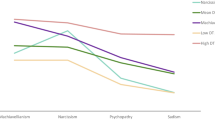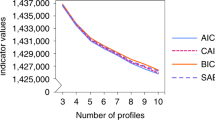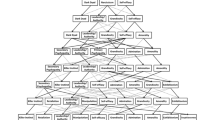Abstract
This study investigated the construct validity of a measure of Karen Horney’s (1945) psychoanalytic theory that postulated three neurotic trends: compliant, aggressive, and detached. Her theory was operationalized by the Horney-Coolidge Type Indicator (HCTI). One hundred seventy-two adults completed the HCTI and the short form of the Coolidge Axis II Inventory, a measure of the three DSM-IV personality disorder clusters. Multiple regression and canonical correlation analyses revealed significant and differential patterns of the three HCTI dimensions with the three clusters. Because Paris (1994) has noted that Horney’s neurotic trends may today be conceived of as personality disorders, one implication of the present findings is that Horney’s dynamic theory can be valid and useful in the general understanding of personality disorders from a cluster perspective.
Similar content being viewed by others
Author information
Authors and Affiliations
Corresponding author
Rights and permissions
About this article
Cite this article
Coolidge, F.L., Segal, D.L., Benight, C.C. et al. The Predictive Power of Horney’s Psychoanalytic Approach: An Empirical Study. Am J Psychoanal 64, 363–374 (2004). https://doi.org/10.1007/s11231-004-4324-z
Issue Date:
DOI: https://doi.org/10.1007/s11231-004-4324-z




